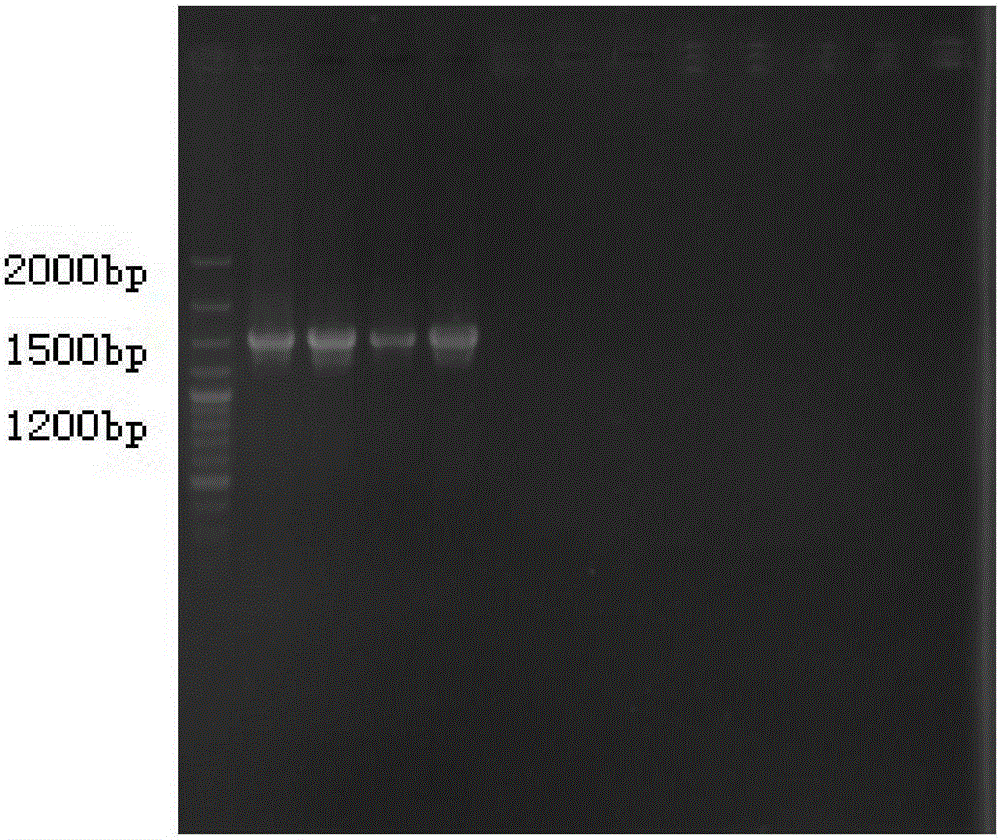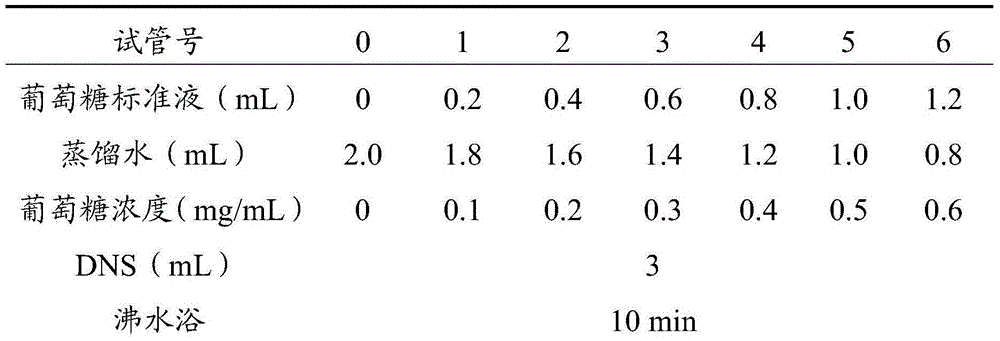Bacillus amyloliquefaciens subsp. plantarum strain for producing cellulase
A technology of amylolytic spores and bacillus plants, applied in the field of microorganisms, can solve the problem of low enzyme activity, achieve the effect of good enzyme activity and broaden the source
- Summary
- Abstract
- Description
- Claims
- Application Information
AI Technical Summary
Problems solved by technology
Method used
Image
Examples
Embodiment 1
[0012] The isolation and screening of the bacterial strain FJAT-29941 of embodiment 1
[0013] (1) Collection of samples: Take the plant roselle root soil from the experimental base of Sugarcane Research Institute in Zhangzhou City, Fujian Province, put it into a sterile collection bag, store it at 4°C, and store it for later use;
[0014] (2) Isolation of bacterial strains: take 10g of soil in 90mL sterile water, draw 1mL for gradient dilution after fully shaking, and choose a dilution of 10 -1 , 10 -2 , 10 -3 ; Then spread the soil dilution on the bacterial culture medium plate and culture at 15°C for 3-5 days; then inoculate the colonies obtained from the culture on the bacterial medium plate by continuous streaking method, and purify and culture at 15°C 72h, obtain pure bacterial strain;
[0015] (3) Screening of bacterial strains: Inoculate the isolated pure bacterial strains in cellulose sodium liquid medium (CMC-Na) by spot-patch method, culture at 30°C for 48 hours,...
Embodiment 2
[0017] Identification of the bacterial strain FJAT-29941 of embodiment 2
[0018] (1) Morphological identification:
[0019] The main morphology of the strain FJAT-29941 was identified, and the main morphology of the strain FJAT-29941 was obtained as follows: the color of the colony is off-white, the colony is round, the surface is dry, the edges are irregular, opaque, and Gram staining is positive.
[0020] (2) Identification of physiological and biochemical characteristics:
[0021] The physiological and biochemical characteristics of the strain FJAT-29941 were identified using the physiological and biochemical micro-identification tubes provided by Beijing Luqiao Company. The identification results are shown in Table 1 below.
[0022] Table 1 Physiological and biochemical identification results of strain FJAT-29941
[0023]
[0024] Note: In Table 1, "+" means there is an effect or a response; "-" means no effect or no response.
[0025] (3) Determination and analysis...
Embodiment 3
[0032] Example 3 Determination of cellulase activity produced by the bacterial strain FJAT-29941
[0033] (1) Drawing of glucose standard curve:
[0034] a. Glucose is dried overnight in an oven at 80°C;
[0035] b. Preparation of glucose solution: take 100 mg of glucose dried to constant weight, dissolve it in sterile water and dilute it to 100 mL to obtain a standard glucose solution (concentration is 1.00 mg / ml), and place it in the refrigerator for subsequent use;
[0036] c. Determination of the standard curve: take 7 test tubes with 20mL scale, and perform operations according to Table 2. Scan the full spectrum with a microplate reader, and draw a tyrosine standard curve based on the data (see figure 2 ).
[0037] Table 2 glucose standard curve
[0038]
[0039]
[0040] (2) Determination of enzyme activity:
[0041] The strain FJAT-29941 was inoculated into CMC-Na liquid medium with 1% inoculation amount, cultured in a shaker at 170 rpm and 30°C for 48 hours...
PUM
 Login to View More
Login to View More Abstract
Description
Claims
Application Information
 Login to View More
Login to View More - Generate Ideas
- Intellectual Property
- Life Sciences
- Materials
- Tech Scout
- Unparalleled Data Quality
- Higher Quality Content
- 60% Fewer Hallucinations
Browse by: Latest US Patents, China's latest patents, Technical Efficacy Thesaurus, Application Domain, Technology Topic, Popular Technical Reports.
© 2025 PatSnap. All rights reserved.Legal|Privacy policy|Modern Slavery Act Transparency Statement|Sitemap|About US| Contact US: help@patsnap.com



